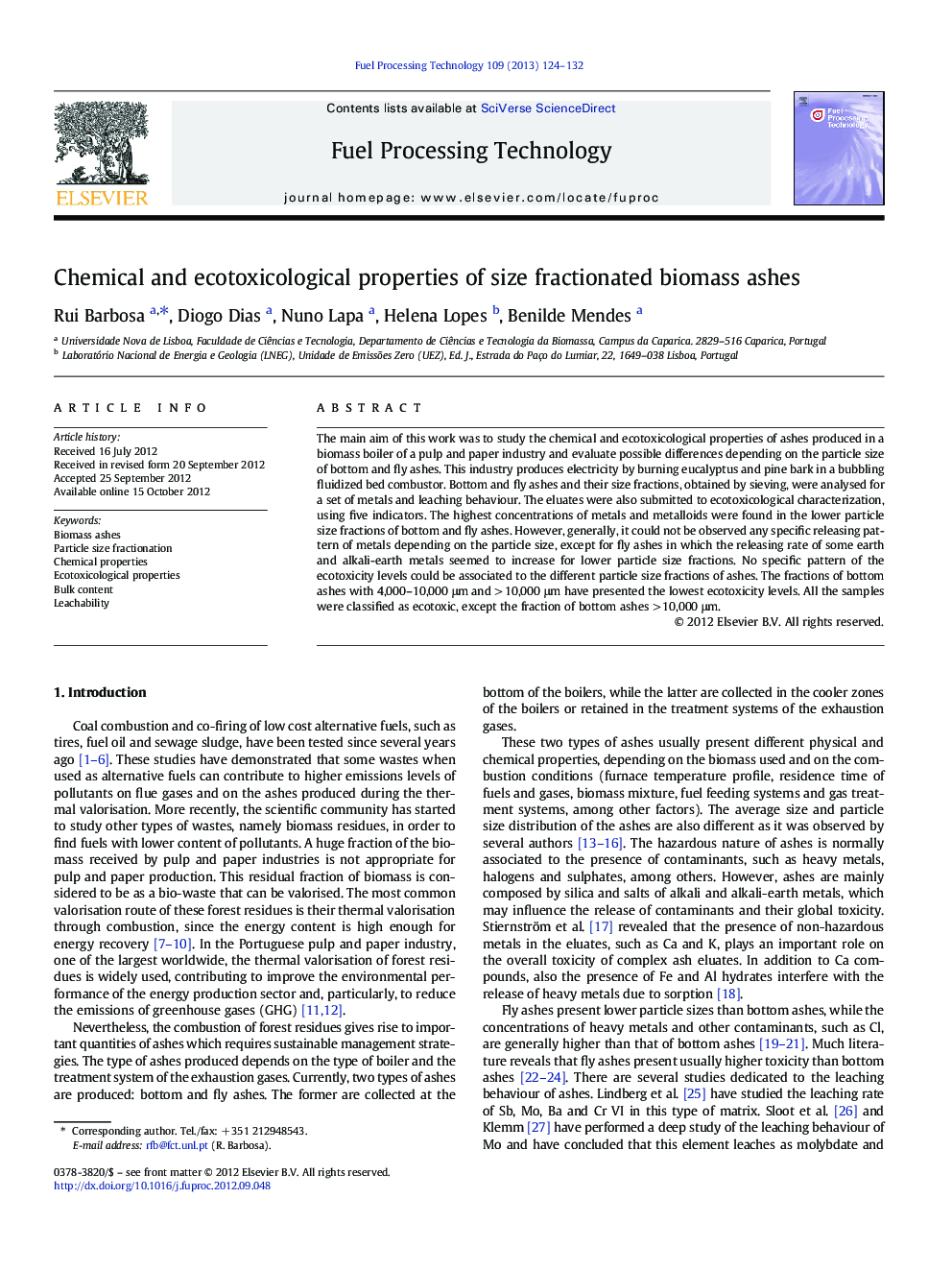| Article ID | Journal | Published Year | Pages | File Type |
|---|---|---|---|---|
| 210170 | Fuel Processing Technology | 2013 | 9 Pages |
The main aim of this work was to study the chemical and ecotoxicological properties of ashes produced in a biomass boiler of a pulp and paper industry and evaluate possible differences depending on the particle size of bottom and fly ashes. This industry produces electricity by burning eucalyptus and pine bark in a bubbling fluidized bed combustor. Bottom and fly ashes and their size fractions, obtained by sieving, were analysed for a set of metals and leaching behaviour. The eluates were also submitted to ecotoxicological characterization, using five indicators. The highest concentrations of metals and metalloids were found in the lower particle size fractions of bottom and fly ashes. However, generally, it could not be observed any specific releasing pattern of metals depending on the particle size, except for fly ashes in which the releasing rate of some earth and alkali-earth metals seemed to increase for lower particle size fractions. No specific pattern of the ecotoxicity levels could be associated to the different particle size fractions of ashes. The fractions of bottom ashes with 4,000–10,000 μm and > 10,000 μm have presented the lowest ecotoxicity levels. All the samples were classified as ecotoxic, except the fraction of bottom ashes > 10,000 μm.
► We assessed chemical/ecotoxicological properties of size fractionated biomass ashes. ► Heavy metals concentrations were vestigial in the biomass ashes and their fractions. ► Heavy metals concentrations were higher in lower particle size fractions of ashes. ► The freshwater organisms were more sensitive to eluates than marine organisms. ► All samples were ecotoxic, except the fraction of bottom ashes > 10,000 μm.
